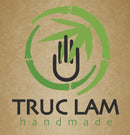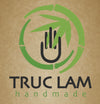TRUC LAM PRESERVES THE BEAUTY OF TRADITIONAL HANDICRAFT “DÓ” PAPER
Over the centuries, the H'mong ethnic group in the Northwestern mountainous highland of Vietnam have continued to make traditional paper - dó paper - by handcraft methods.

Dó paper plays a special role in the religious life of H'mong people. They use dó paper in the events of funeral and worship rites.
Now, Hmong people method of making traditional paper is only practiced in a few remote villages. Even in such villages, such as Pà-Cò, few families conserve the know-how and process of making dó paper.

Raw materials for making dó paper is obtained from the bark of the giang – a kind of bamboo. In order to produce durable but smooth and beautiful paper, the paper makers must master the know-how in each processing stage.
Raw materials must be obtained from natural forests, then boiled with kitchen ash and baked lime powder (calcium hydroxide) for one night, and then keep incubated for about one week. The longer the incubation time, the softer the ingredients. After that, it is refined into pulp and then coated into paper on fixed-size frames.

Dó paper made from the bark of giang tree is smooth and has a bright beige color.

To help preserve the traditional paper making profession, Truc Lam Company is using H'mong people's dó paper to develop new products that meet the tastes of modern consumers: painting paper, stationary paper, postcard paper ...


Most unique of all is the use of dó paper to decorate the appearance of water puppets, which used to be lacquered, to help create a new kind of beautifully decorated pattern.



